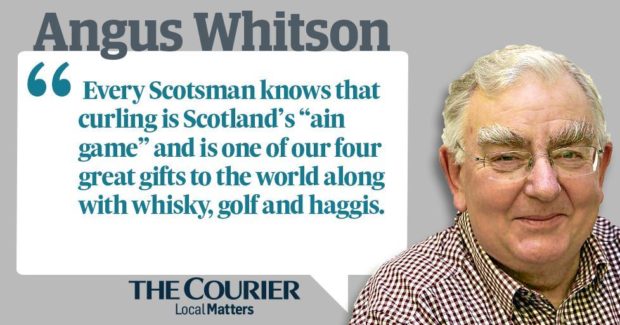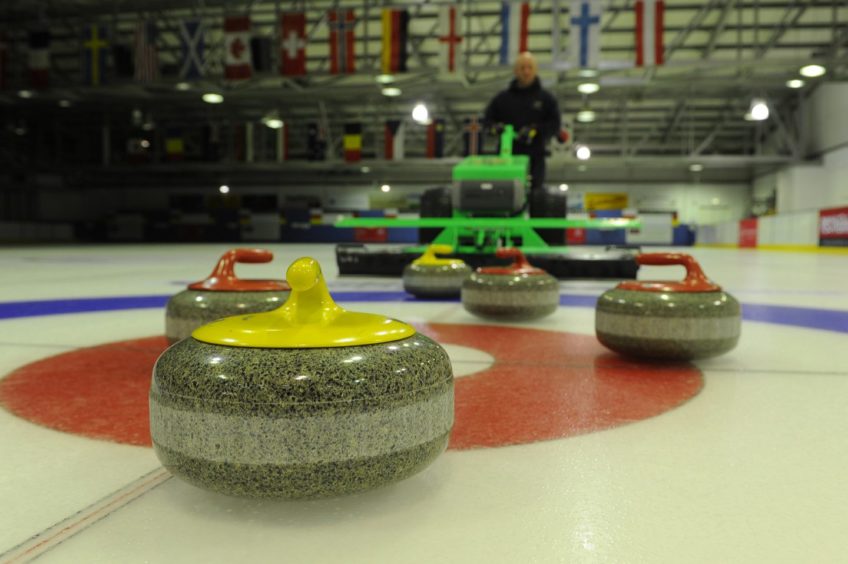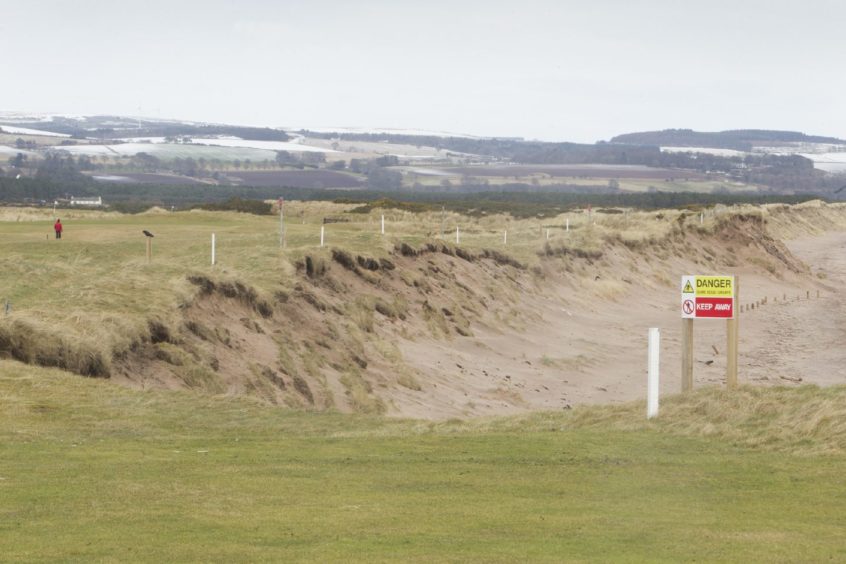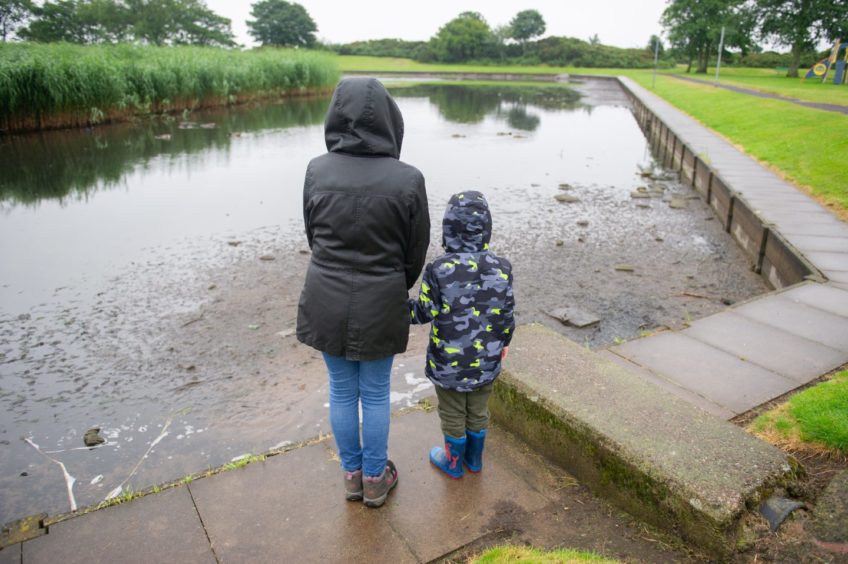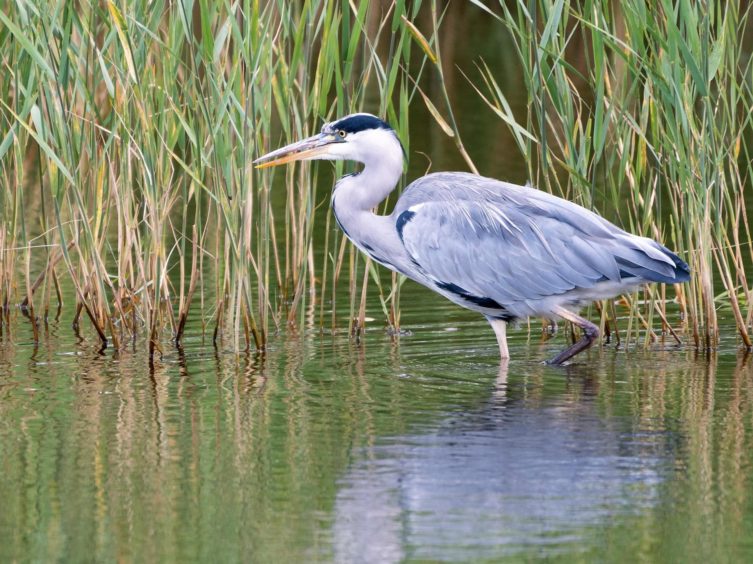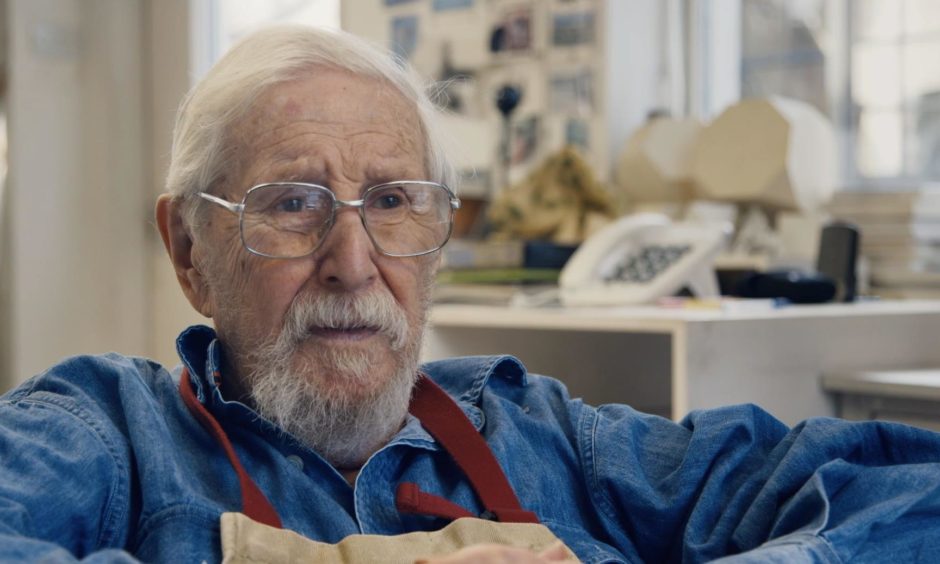I grew up in Montrose. A favourite childhood walk, in easy walking distance of home, was to the Curlie.
As its name suggests it was an outdoor curling pond in the days before the introduction of indoor curling.
The long-defunct Montrose Curling Club originally played on the Mary Loch, at Little Mill on the outskirts of the town, on the Brechin road. The Mary Loch was drained in the 1920s and there is no trace of it now.
There are no records of when curling started on the Curlie but as records of the game go back at least to the early sixteenth century there could have been curling for as long as golf has been played at Montrose.
The Montrose links are the fifth oldest golf course in the world and has been one of the final qualifying courses for the Open Golf Championship – a recognition of its quality.
Claims that curling originated in the Low Countries with players throwing boulders along frozen canals is just wishful thinking on the part of fanciful Dutchmen. Every Scotsman knows that curling is Scotland’s “ain game” and is one of our four great gifts to the world along with whisky, golf and haggis.
In the 1940s and 1950s when there was a series of hard winters and the Curlie froze over, the Rector of Montrose Academy sometimes closed the school for an afternoon so that pupils could go skating. Imagine such liberal thinking today.
And in the summer, Arbuthnotts the boat builders – long gone now but a name familiar to Montrosians getting smoother in the tooth – had rowing boats for hire on the pond.
Tall bulrushes fill the middle of the pond and there’s no chance now of a bonspiel , as a traditional outdoor curling match is called
I can’t remember curling ever being played on the Curlie but I do remember wild, free-for-all games of ice hockey – no referee, indeterminate numbers on each side and making up the rules as you went along. It brought new meaning to “bully off” at the start of each game.
The Curlie was just a rush-fringed country pond then, on the edge of Montrose Golf Course. Then the site was enhanced, edged with concrete slabs and it became a community asset.
Tall bulrushes fill the middle of the pond and there’s no chance now of a bonspiel, as a traditional outdoor curling match is called, or of free skating – and ice hockey is out of the question.
But the Curlie has assumed a new character. The bulrushes provide cover for waterfowl such as coots and waterhens, and when I took a stroll round there at the beginning of the week there was a dabchick, which I didn’t expect.
A pair of pied wagtails were engaged in their courtship display. They are such busy little birds always on the move with their short, undulating flight. They are probably roosting overnight in the reeds but the hen bird will be sitting on eggs soon.
With Montrose Basin so close it was no surprise to see mallard duck which had dropped in for a spot of coffee shopping. And I’ve seen herons hunting round the reeds, probably for frogs, as I don’t imagine there are any fish in the shallow water.
The old Caledonian Railway from Montrose to Bervie ran past the pond and parts of the old track bed can still be seen.
I’ve had telephone calls from Montrose readers telling me they’ve had early morning sightings of roe deer beside the Curlie and expressing surprise that such a shy animal should come so far into the town.
I explained that they will have walked up the old railway track from Kinnaber Moor and if they are not disturbed they will get used to humans and human habitation. But not to expect to see them once folk are out walking their dogs and playing golf.
Painting the sky
I had an “if only” moment earlier in the week. The Doyenne and I were watching the television documentary, The Eye of the Storm, about James Morrison, Montrose’s adopted landscape artist who sadly died last year.
Appropriately, the film maker, Anthony Baxter, is also an adopted Montrosian, keeping it all very much in the family, in a manner of speaking.
I knew Jimmy for many years and there was an open invitation to visit him in his studio at Craigview, looking over fields to the sea and Scurdieness lighthouse.
My “if only” moment was, if only I’d visited him more often. There was always a welcome and a cup of coffee from his wife Dorothy and latterly his partner, Ann.
We would go into his studio and Jimmy talked to me about painting – his painting. He never imposed his ideas on me – just talked – and I learnt much from him.
Watching the programme brought back these easy-going visits and the man’s undemonstrative enthusiasm for his passion.
I used to tease Jimmy and say he was just a dauber, and he would smile beatifically. He did respond once, saying – But a very good one. He had a point.
